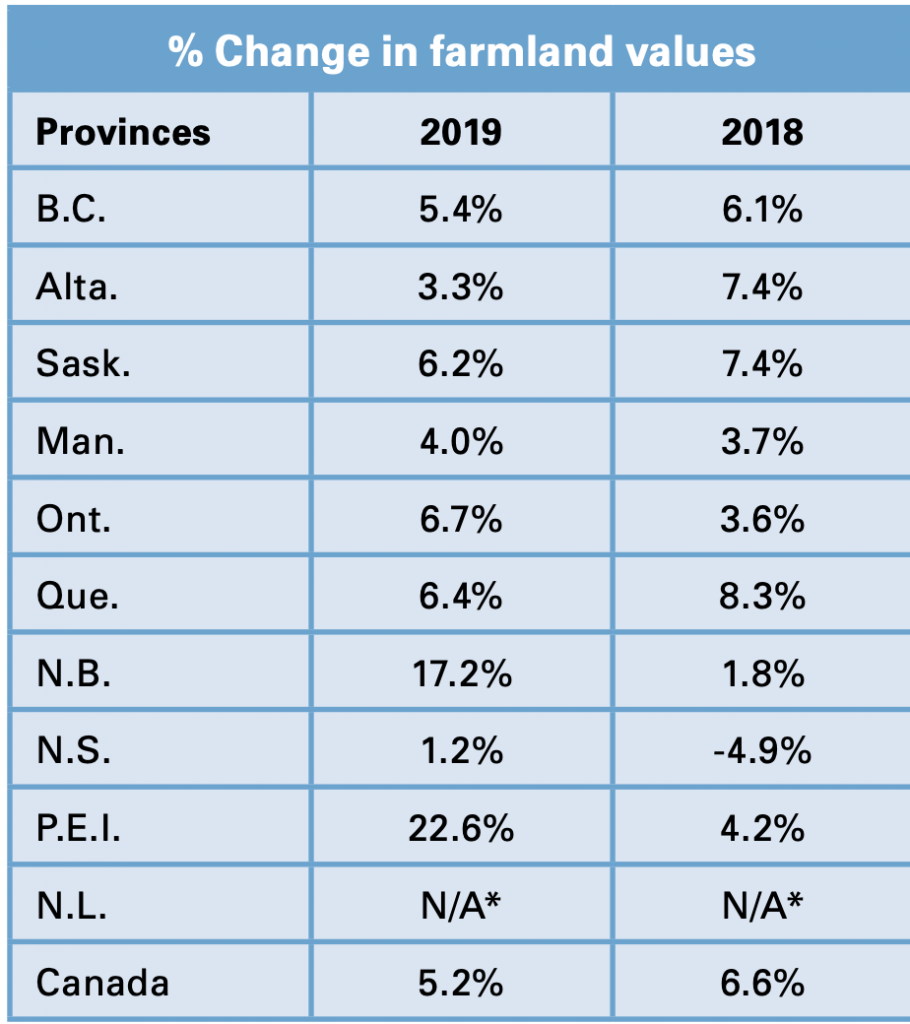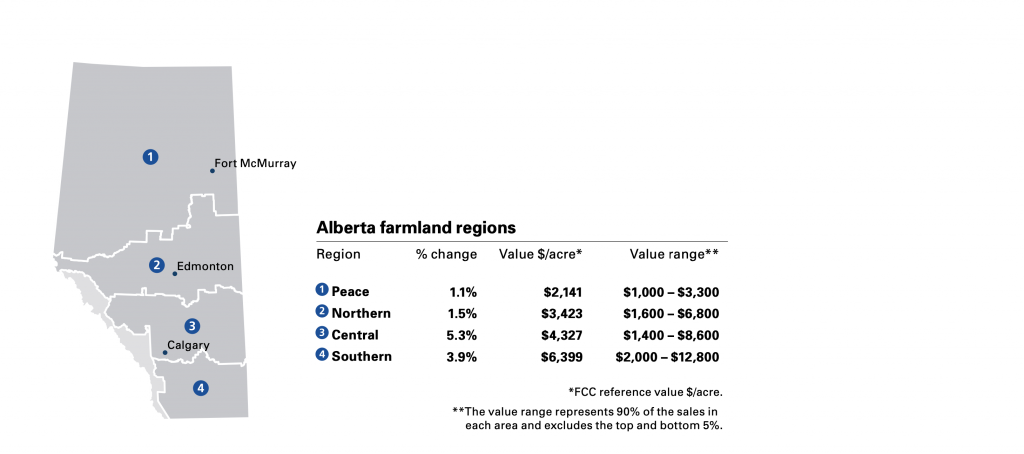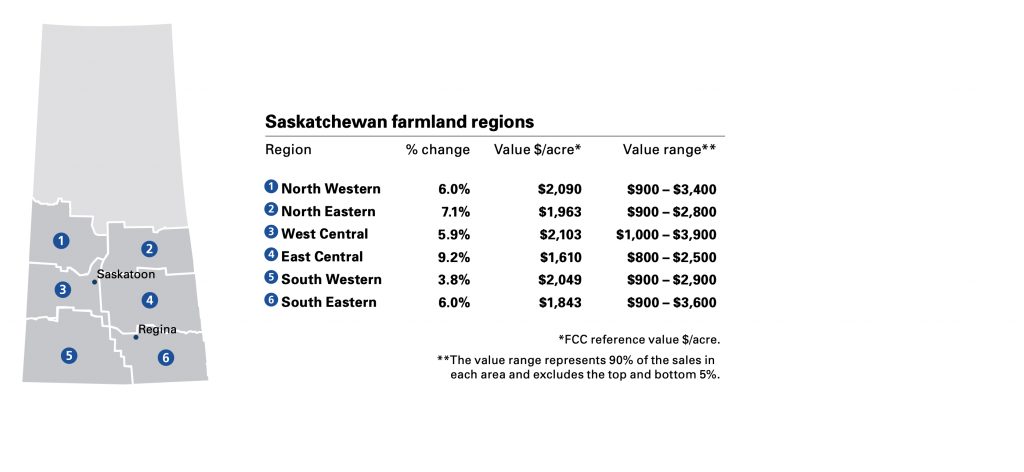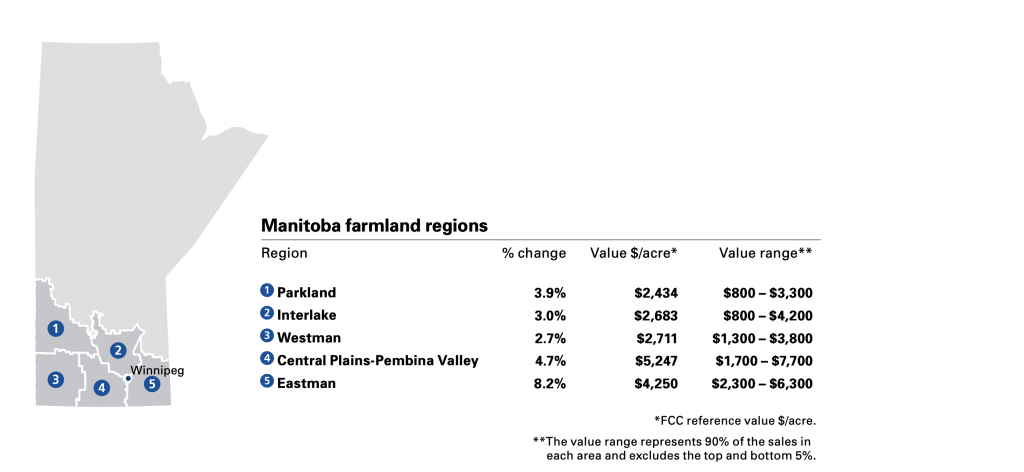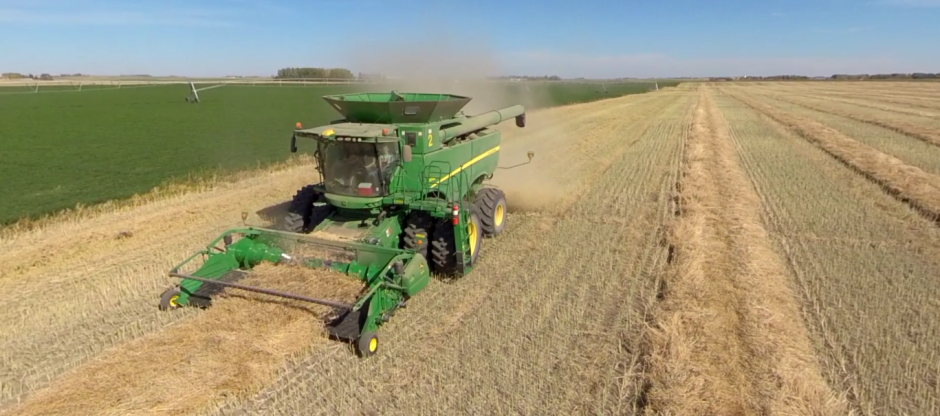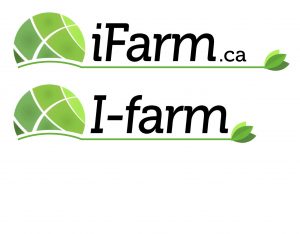2019 land value report by FCC reflecting land values in Canada
Below a overview of the increased values for the year per province and for Canada.
Eastern Canada showed a great year with above average increases an the Prairie province’s somewhat more restraint due to extreme weather conditions during growing and harvesting

2019 FCC Farmland Values Report
National trend Canada
Annual % change in farmland values
The average value of Canadian farmland increased 5.2% in 2019, tying 2010 for the smallest increase over the past decade. This increase followed gains of 6.6% in 2018 and 8.4% in 2017.
Despite the increase, the national average farmland value is nowhere near the record increases observed in 2012 and 2013, when national average values climbed 19.5% and 22.1%, respectively.
The highest provincial increases in 2019 were observed in two of the Atlantic provinces: Prince Edward Island with an average increase of 22.6% and New Brunswick with an average increase of 17.2%.
Ontario, Quebec and Saskatchewan reported average increases slightly above the national average at 6.7%, 6.4% and 6.2%, respectively, while British Columbia was closest to the national average at 5.4%. Manitoba, Alberta and Nova Scotia had average increases below the national average at 4%, 3.3% and 1.2%, respectively.
For the fourth consecutive year, there was an insufficient number of publicly reported transactions in Newfoundland and Labrador to fully assess farmland values.
When looking at the national results, it’s important to remember the reported number is an average. The differences between regions within each province vary widely.
